Sunday was to be our last full day in Paris. Our first stop was an Uber to Parc de Belleville, a green space of about eleven acres located halfway between the Père-Lachaise cemetery and the Parc des Buttes-Chaumont, but still in the 12th arrondissement. It was once the royal domain under the Merovingians (5th to 8th century), which goes all the way back to Clovis I, the first king of the Franks, and it is the Merovingian Church that still claims divine origins and kinship directly from Christ.
We walked from the bottom of the park up to a lookout point, but the once beautiful park, was now covered with graffiti on the cement walkways and steps, the fountains no longer ran, the homeless sleep there, and well, it isn’t a place where you want to walk at night. We managed to get one nice picture of the green pathway. And the claim to see the Eiffel Tower from the highest point only produced a tiny rise on the horizon.
We caught another Uber and went to Montmartre, where we planned to do our last shopping before leaving. We decided to eat lunch first and ended up at a small place with good food. Vere had foie gras pate on toast and a side of deviled eggs, filled with a heavy yolk cream—another specialty of Paris. I had smoked salmon and cream cheese with olives in a salad that was topped with fried potatoes.
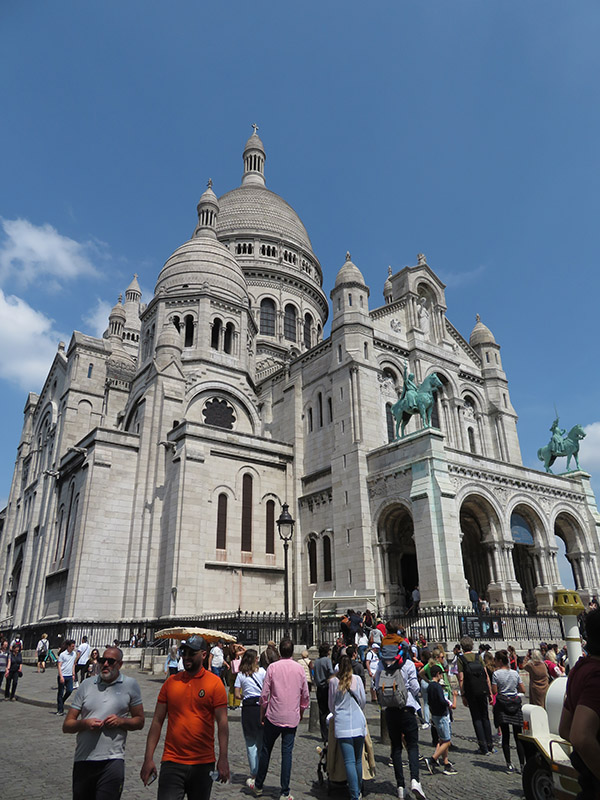
We commenced with our shopping, going in and out of many tourist shops and when we were done, we had a bag full.
Then we walked a few short blocks to the funicular that took us up to Sacre-Coeur, Paris’ well-known basilica that was erected and finally consecrated for service in 1919. It is cared for by the chaplains and the community of the Benedictine Sisters of the Sacred heart of Montmatre. We had been inside before, but Vere wanted to go in again. Not wanting to be part of a slow moving tide of humanity to see something I had already seen, I stayed outside under the shade of a tree, looking out at all of Paris.
For those that have never seen the religious edifice of Sacre-Coeur, once someone arrives they are greeted by a huge façade of off-white stone. A sign in front reads, “Day and night, open to all since first opened, prayers have been continuously said to God.” The face of the church rises up multiple levels of stairs where there are three large arches held up by four thick columns. Above them are three smaller arches in design and above to either side, giant bronze statues of men on horses stand. The bronze turned to green verdigris through the last 125 years, has dripped down and stained the white stones with green stripes. Above at the sides, gargoyles look down as if laughing at the crowd. Above it all is the rounded cupola with its scalloped décor that looks like whipped cream on a Baked Alaska dessert.
All around, hundreds of people are either waiting to enter in a long line, milling around taking pictures, seated on the wide and long stairs leading up to the church, or they have climbed over the metal fence and sit on the grass to eat, where pigeons quickly come afterward to get at their luncheon remains. A tap-tap-tap comes from a man with the edge of a can opener that hits a beer bottle, trying to sell his Heineken. African-Parisians have cloths spread out with their wares. A man holding small packets of golden locks taps them to get people’s attention. When one sees the metal fencing all around, one knows why. Since the Pont des Arts pedestrian bridge in Paris (which connects the Louvre Museum with the Institute de France over the Seine) has now forbidden people to put their love locks inscribed with their names on that railing, Sacre-Coeur has become another place to do this. Millions of inscribed brassy locks hang from the metal railing, so thickly attached, lock over lock, that most of the green railing can hardly be seen.
A man with a small Cortina plays an old French melody in the shade. Below the steps facing up to the natural theater of seats, a younger guitar player strums a modern song. Also, the constant clatter of feet and chatter of multiple languages are heard, as all shuffle about and garner the perfect view of the church above and the city view, below. The smell of crepes wafts up from below as the small bike-driven, one burner box of the maker plies his sweet cakes. With a constant stream of hungry people lining up for them, one wonders where does all that batter come from? Perhaps forty or more pitchers of pre-made batter are squeezed in under the cooker? And his arm must grow very tired from swirling the crepe spreader in a circle and back again to get the perfect roundness.
 Vere finally returns from the church, and now we are done with pictures, done with the clutter of people and make for a side street to get an Uber back to our apartment. But the crowds just grow thicker.
Vere finally returns from the church, and now we are done with pictures, done with the clutter of people and make for a side street to get an Uber back to our apartment. But the crowds just grow thicker.
In the midst of all this hubbub is found a man in complete calmness. He is aged with a full gray beard sitting against a wall on an old rickety chair. He plays a small accordion, and to our astonishment his black cat is nestled on top of the player, completely relaxed, and enjoying the vibration of the instrument. The man and the cat look completely at ease and ecstatic through it all as the thick noisy crowds stop to take pictures and then move on.
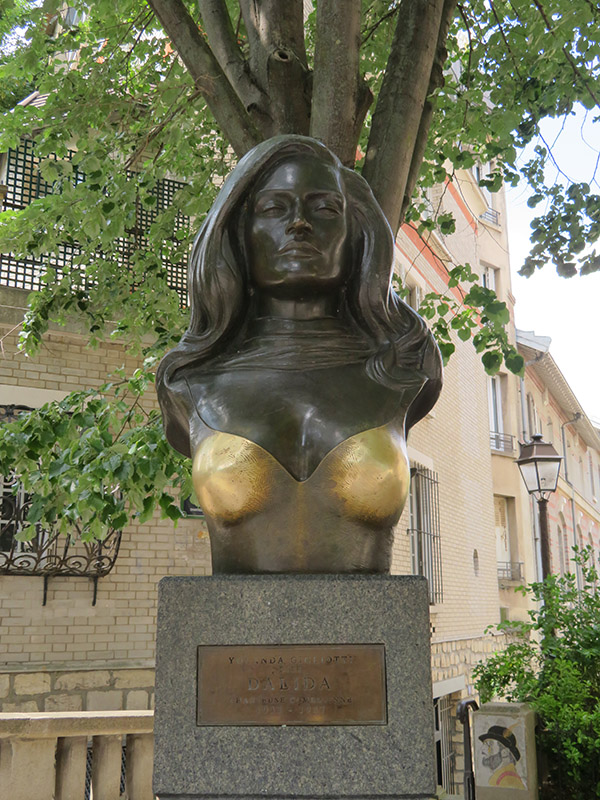 No cars are allowed into this prime shoppers-real-estate-extravaganza. We finally get through the crowds and find stairs going down the hill. Vere finds a local attraction. It is a bronze bust of a woman who was a famous songstress of the area, and her name is LaLida. She has a beautiful face with long wavy hair and two large, covered breasts, but they have been rubbed to a golden sheen as passersby have rubbed them for good luck. While we are there, a songstress in a red gown across the street is loudly singing an operatic song to the joy of passersby that video her.
No cars are allowed into this prime shoppers-real-estate-extravaganza. We finally get through the crowds and find stairs going down the hill. Vere finds a local attraction. It is a bronze bust of a woman who was a famous songstress of the area, and her name is LaLida. She has a beautiful face with long wavy hair and two large, covered breasts, but they have been rubbed to a golden sheen as passersby have rubbed them for good luck. While we are there, a songstress in a red gown across the street is loudly singing an operatic song to the joy of passersby that video her.
We make our way down to a street where an Uber can get to. While waiting, we received the one thing that all Parisians will eventually receive, a gift from the pigeons. The guano plops on my shirt shoulder, the coat I am holding and on Vere’s shirt shoulder. He says it is good luck. But only the superstitious believe such a silly thing. By the time we wiped it off with tissue, our Uber had arrived.
The traffic is fierce as we are stalled in a traffic jam, waiting. I glance over and see a man of undistinguishable old age. He wears all brown clothes, looking neither poor nor rich. He is just a man on his way. I watch him slowly take a two-inch step and then another. My own body is aching from the many miles I have walked all over Provence and Paris from site to site with my steps and strides. Then I see him take a few more steps and pause while he takes hold of a street stanchion to steady himself and draw some breaths. I can see they are not deep breaths. He looks around. Has anyone seen him struggle to put one foot in front of the other? Then he continues, two inches at a time. I don’t know whether he has done this every day, if he is just walking to the corner cafe, or if it is his daily exercise. I think someone should be running errands for him. But then I realize this is his choice. This is his need, to feel a part of the human race that keeps going day after day no matter what. He releases the stanchion and takes a few more steps. In all, since I have watched him, he has moved forward one- and one-half feet. The taxi has not moved at all. Then all of a sudden, the vehicle moves forward with a jerk and dashes to the next signal. My lesson in that moment, is no matter who we are, or how fast we can go, we each move at our own pace and do what we can. At least we are each moving forward in our own way and in our own time.
For dinner, we went back to the restaurant we visited previously in Paris, L’Aubergeade. It was close, it was so good the first time, and there were more things that we wanted to try on their menu. This time, we just went for the main courses and dessert without an appetizer. Vere went for the Magret de canard with a caramel au jus and mashed potatoes with nutmeg. And I went for the lobster. It was twice the amount of pasta one could possibly eat, but the lobster was delicious. For dessert we shared what they called an Omelette Norvégienne de la maison flambée au rhum. It was basically a Baked Alaska, with a layer of cake, a layer of ice cream over it and topped with a soft meringue which is toasted in the oven, then served setting aflame with 151 rum. Vere wanted to dive in before the fire went out and I had to stop him. There wasn’t enough ice cream and too much meringue to make it a traditional dish, but it was still good.
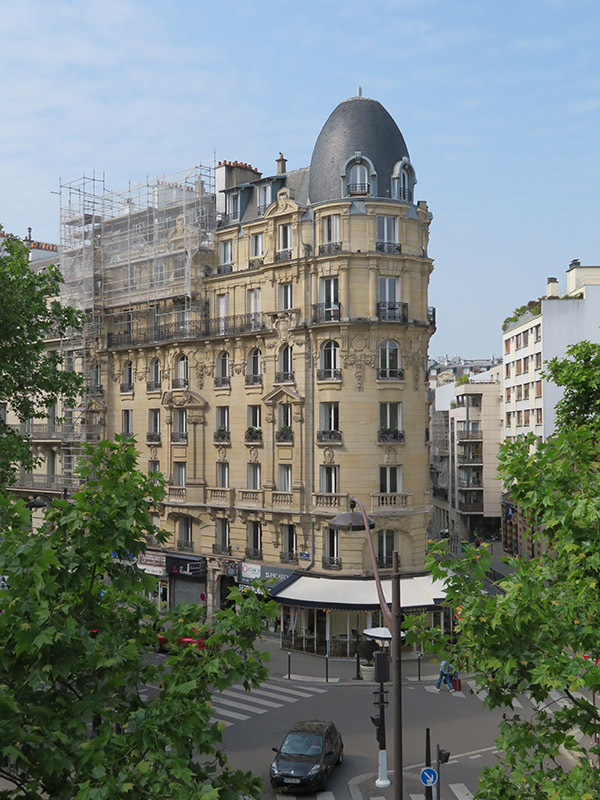 We slowly strolled back, arm in arm, extolling the virtues of Paris. Vere would love to live there, but I decided it was too big of a busy city, the traffic was bad, too much graffiti and it was too crowded. We had experienced the spring tourist crowds swell since we had arrived three weeks before. The Uber drivers are saints, the way they put up with bad traffic and crazy drivers. But to live in Provence. Now, that would be more relaxing.
We slowly strolled back, arm in arm, extolling the virtues of Paris. Vere would love to live there, but I decided it was too big of a busy city, the traffic was bad, too much graffiti and it was too crowded. We had experienced the spring tourist crowds swell since we had arrived three weeks before. The Uber drivers are saints, the way they put up with bad traffic and crazy drivers. But to live in Provence. Now, that would be more relaxing.
The next morning, with our suitcases already packed, we took one last stroll up on the elevated walkway. Then got a taxi to the airport. Our flights took their usual course, allowing us time to reminisce. It had been a great trip, especially with this time enjoying Aix-en-Provence. Still, we’ve so much more to see in France in the years to come, as I know we will.
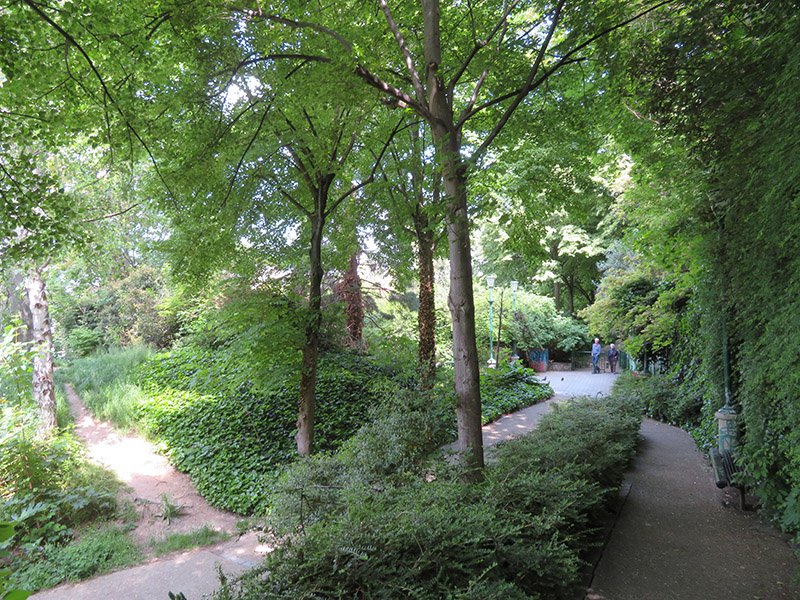
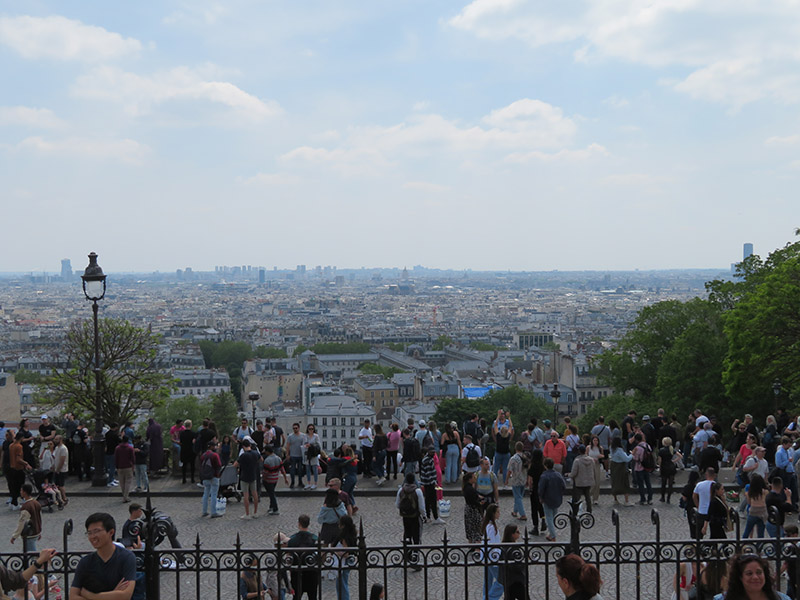
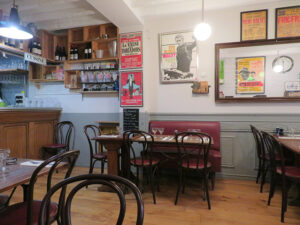
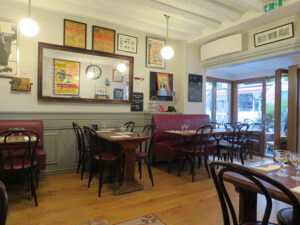
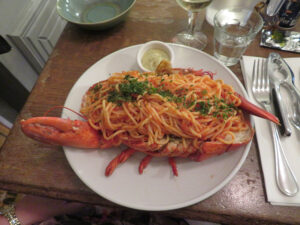
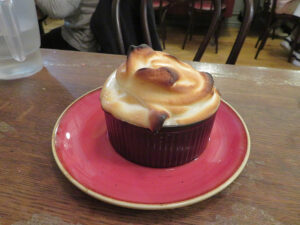
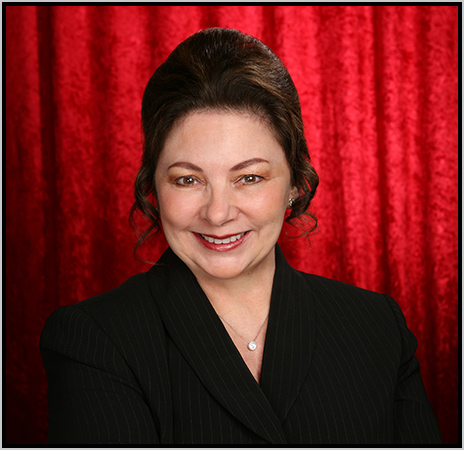 The official website of Lita-Luise Chappell, writer on sex, magic, food, distant lands, and everyday life with articles, poetry, novels, travelogues, rituals, cookbooks, and short-stories.
The official website of Lita-Luise Chappell, writer on sex, magic, food, distant lands, and everyday life with articles, poetry, novels, travelogues, rituals, cookbooks, and short-stories.
